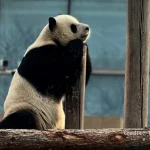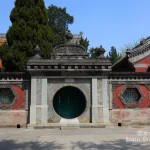Nestled quietly in the heart of the capital, Beijing Five Pagoda Temple — also known as Wuta Temple or Zhenjue Temple — is a true hidden gem. With over 600 years of history, this sacred site is a rare blend of Indian and Chinese architectural styles, making it one of Beijing’s most unique and culturally rich Buddhist temples.
Today, the temple also serves as the Beijing Stone Carving Art Museum, showcasing stunning examples of ancient stone artistry. Its most iconic feature is the magnificent Diamond Throne Pagoda, a five-tower structure adorned with detailed carvings and sacred symbols.
In this guide, we’ll take you through everything you need to know — from the temple’s fascinating history to architectural highlights, practical visiting tips, the best times to go, and nearby places to explore. Get ready for a cultural deep dive into one of Beijing’s most underrated treasures!
1. History and Cultural Background of the Five Pagoda Temple
The Five Pagoda Temple (also known as Zhenjue Temple) sits on the north bank of the Changhe River and the north of Beijing Zoo in Beijing’s Haidian District. Its story dates back over 600 years to the Yongle era of the Ming Dynasty, around 1413.
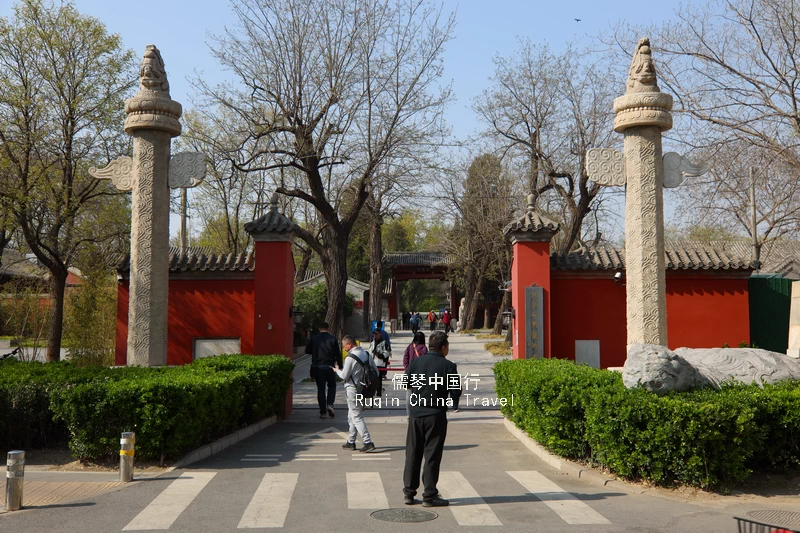
According to historical records, an Indian monk named Pandita (班迪) arrived in Beijing and presented the Yongle Emperor with five golden Buddha statues and architectural drawings of the Mahabodhi Temple in Bodh Gaya (佛陀伽耶精舍), one of India’s most sacred Buddhist sites. Moved by the gift, the Ming Emperor’s grandson, the Chenghua Emperor, ordered the construction of a temple modeled after the Indian design in 1473. It was originally named Zhenjue Temple (真觉寺), meaning “True Enlightenment Temple.”

However, locals were more struck by the temple’s most distinctive feature — five small stone pagodas rising from a high platform — and began calling it Wuta Temple, or “Five Pagoda Temple.” The nickname stuck and is still in use today.
Though much of the original temple was destroyed during the turbulent late Qing period, the Diamond Throne Pagoda ( 金刚宝座 )survived. In the late 1980s, the Beijing government rebuilt the site around this ancient pagoda, establishing the Beijing Stone Carving Art Museum and opening it to the public. This thoughtful preservation effort turned a forgotten relic into a meaningful destination once more.
2. The Star of the Show: The Diamond Throne Pagoda
The true highlight of Five Pagoda Temple is its awe-inspiring Diamond Throne Pagoda — a masterpiece of ancient architecture that beautifully blends Indian and Chinese design elements. It’s not just the heart of the temple, but also a rare example of Buddhist architectural fusion from the Ming Dynasty.
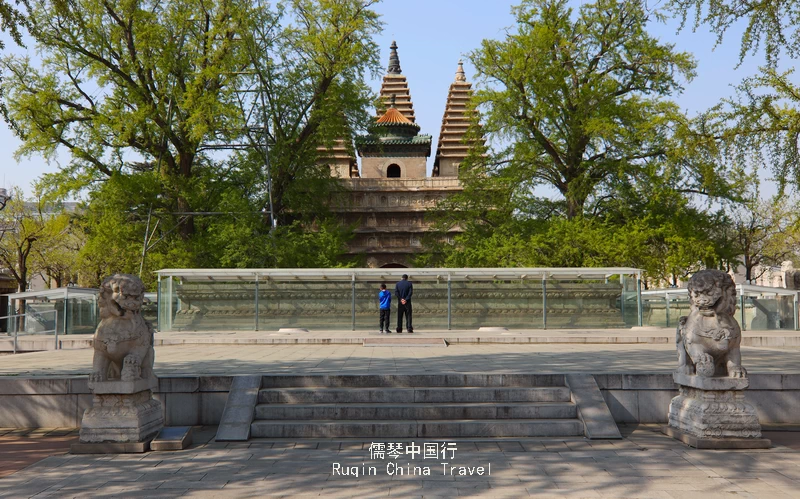
The structure measures 18.6 meters long, 15.7 meters wide, and stands about 15.7 meters high. Built entirely of stone and brick, the pagoda features a square base (the throne) topped with five compact, dense-eaved stone pagodas, creating a majestic and unmistakable silhouette.
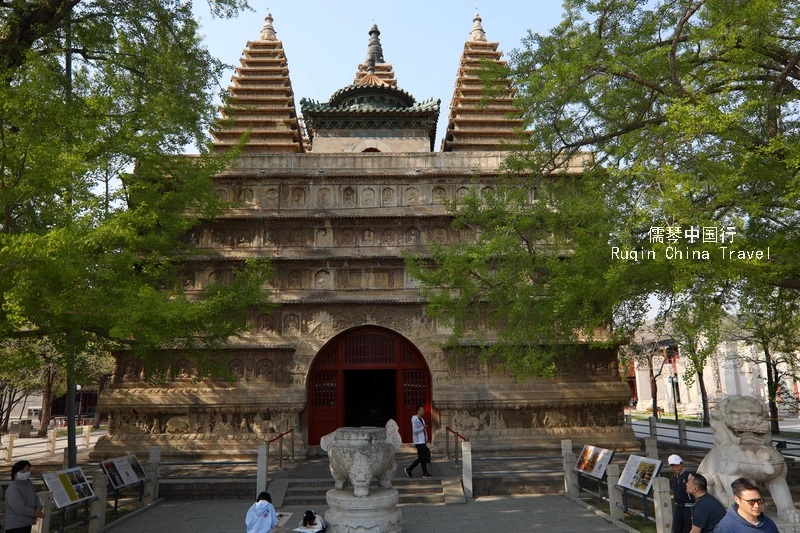
The throne base is styled like a traditional Chinese “Sumeru platform”, faced with pale stone that gives it a graceful, solemn appearance. Intricate Buddhist carvings wrap around all four sides — you’ll find Sanskrit scriptures, Buddhas, ritual objects, and auspicious symbols, each showcasing the exquisite stone carving skills of the Ming era.
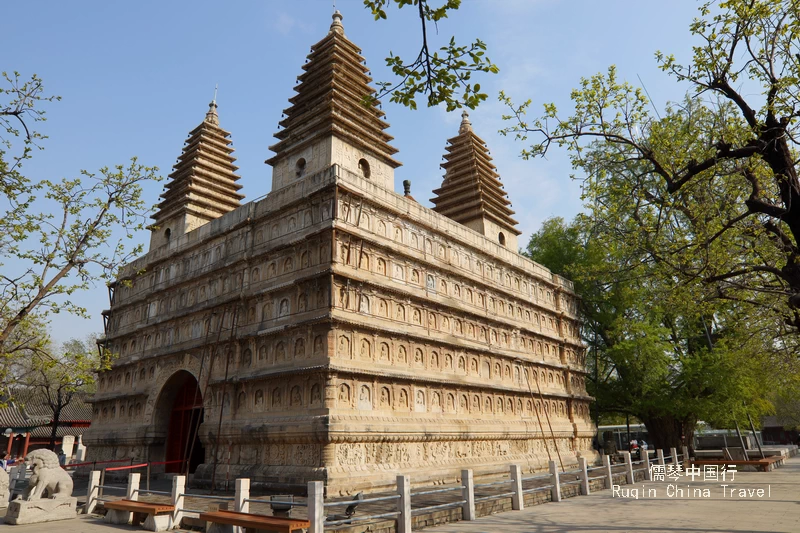
On the north and south sides, arched entrances are adorned with carvings of mythical Buddhist creatures like Garuda, dragon maidens, divine whales, flying sheep, lions, and elephants. Visitors can enter the pagoda through the southern archway, then climb a narrow stone staircase up to the rooftop pavilion for a close-up view of the five towers.
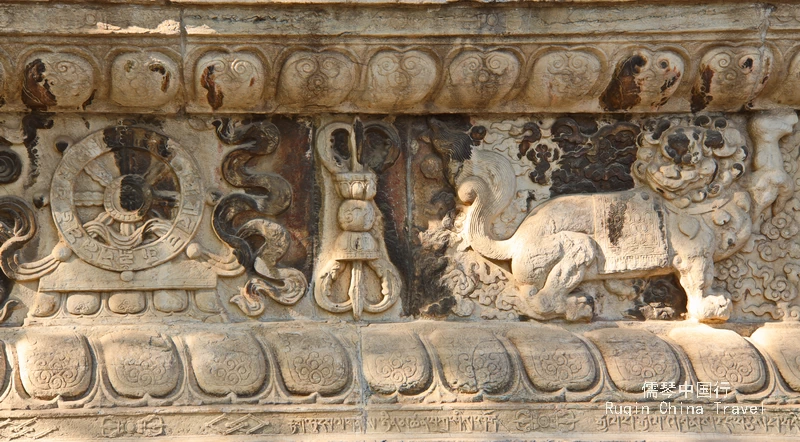
The layout follows Tibetan Buddhist mandala principles: one main central tower with 13 tiers (symbolizing the thirteen heavens in Buddhism), surrounded by four 11-tiered corner towers. Each tower features beautiful stone-carved eaves, designed in the style of traditional Chinese wooden architecture — a brilliant technical and artistic feat.
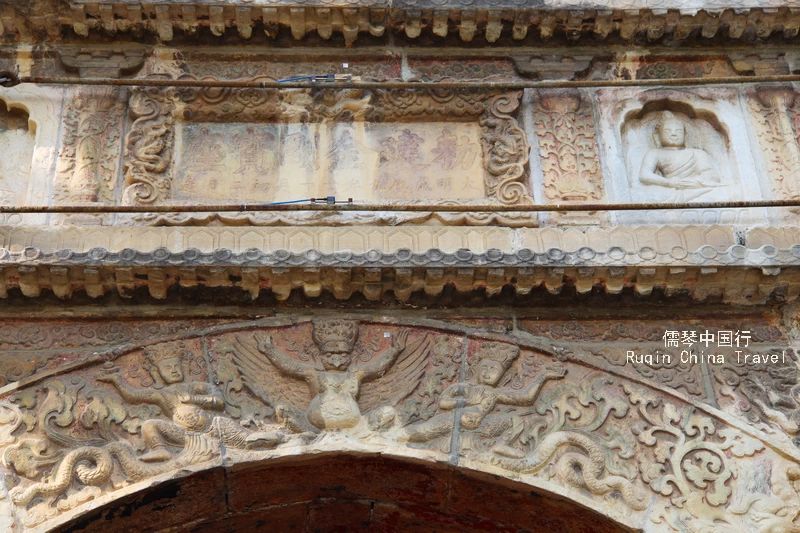
One standout feature is the glazed tile pavilion on the rooftop, a later addition from the Qing Dynasty. With its vibrant colored tiles, it gleams in the sunlight and adds a touch of Chinese flair to the otherwise Indo-style structure.
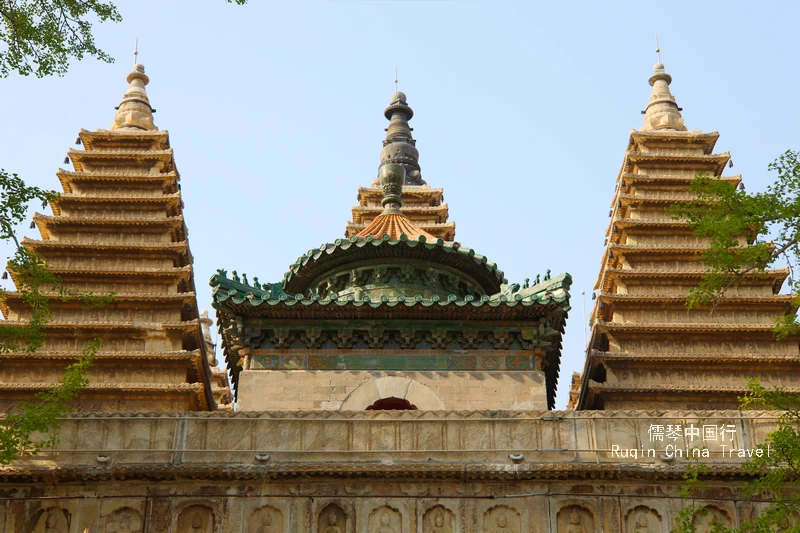
This pagoda isn’t just a visual wonder. It’s also a symbol of cultural exchange, merging Indian religious design with Chinese aesthetics and craftsmanship. From the layout to the tiniest carving, the Diamond Throne Pagoda offers a fascinating glimpse into 15th-century architectural fusion — and stands as a priceless piece of cross-cultural heritage.
3. Beijing Stone Carving Art Museum: A Hidden Treasure Trove
While the Diamond Throne Pagoda steals the spotlight, the Beijing Stone Carving Art Museum, located right around it, adds incredible depth to your visit. Surrounding the pagoda on its east, north, and west sides are nine exhibition areas that house over 500 carefully preserved stone relics — all collected from various parts of Beijing.
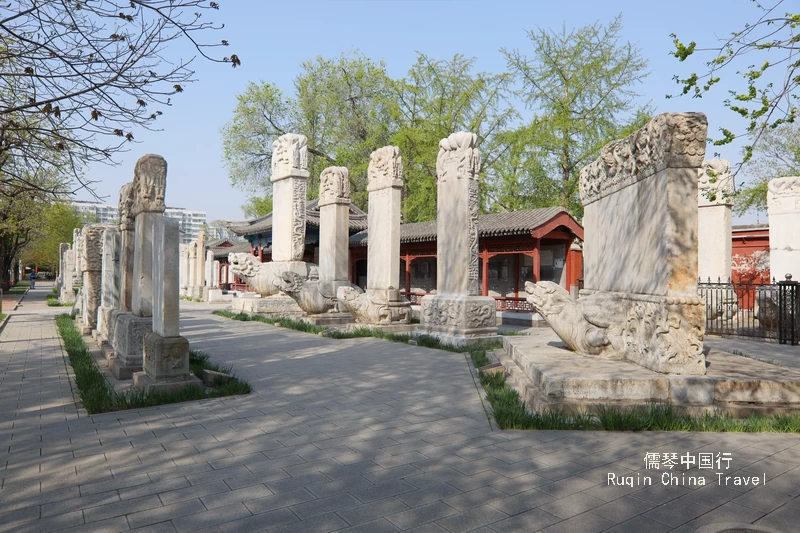
You’ll find everything from intricately carved Buddhist statues to ancient tomb inscriptions, temple steles, and architectural stone pieces. Many of the works on display are true masterpieces, such as expressive stone lions, horses, and human figures, as well as beautifully detailed Buddhist reliefs and steles that document key historical events.
The Area of Tomb Stones of Missionaries.
One of the most fascinating sections is the Area of Tomb Stones of Missionaries. Here, 34 gravestones from the Jesuit missionary cemetery in Zhengfu Temple Village, Haidian, are on display. These tombstones date back to the Ming and Qing dynasties, offering rare insight into the lives of foreign missionaries in China.
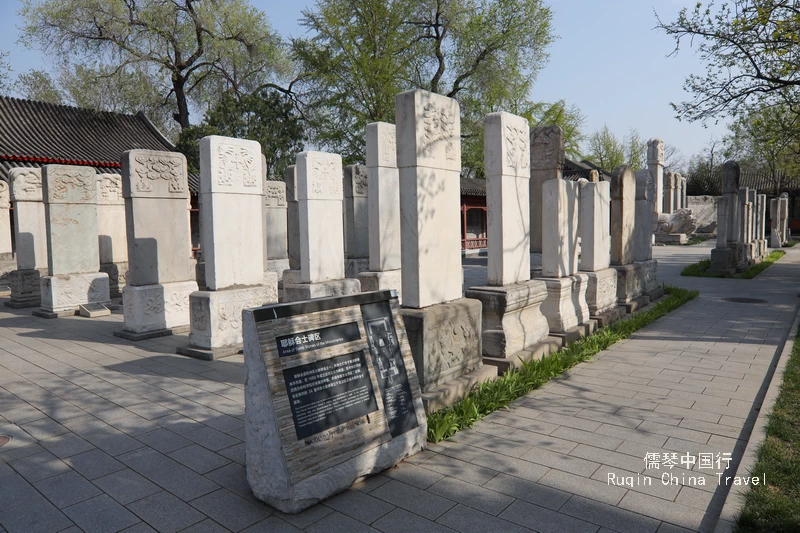
These men not only spread Christianity but also shared Western science and technology, while introducing Chinese culture to Europe — making this a site of real cross-cultural significance.
The Engraved Temple Steles Area
Another highlight is the Engraved Temple Steles Area, where large stone tablets tell the stories of Beijing’s ancient temples — their founding, growth, and role in local religious life. Notable pieces include paired steles from Longfu Temple and Xianlinggong Taoist Temple. These steles are key resources for anyone interested in the religious history and cultural development of Beijing.
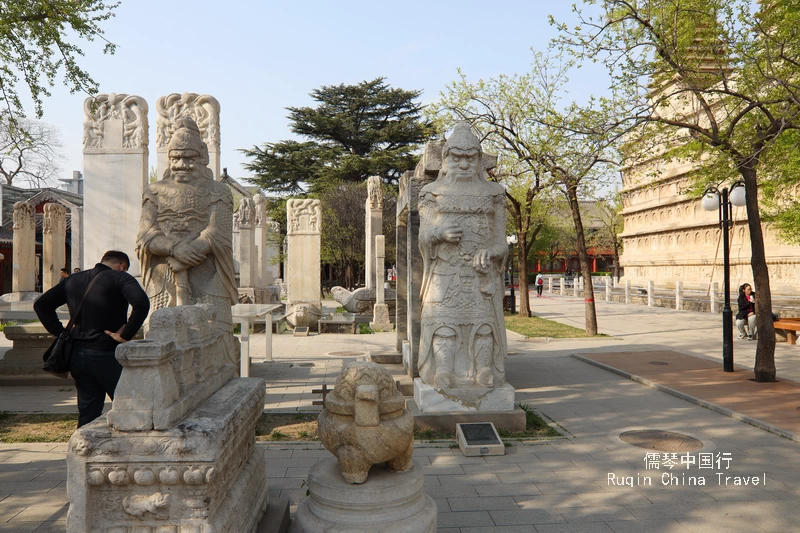
Whether you’re a history buff or a curious traveler, this museum adds a whole new layer to your Five Pagoda Temple experience — turning a quiet stroll into a journey through centuries of art, belief, and cultural exchange.
4. A Peaceful Garden Oasis: The Landscape Around Five Pagoda Temple
The charm of Five Pagoda Temple isn’t just in its architecture — its garden setting also plays a big role in creating the serene atmosphere that makes this place so special. The landscaping here is thoughtfully designed to complement the ancient stone pagoda, blending natural beauty with cultural heritage.
Right in front of the temple, you’ll find four majestic ginkgo trees, two of which are believed to be over 600 years old. These ancient trees were likely planted when the temple was first built — living witnesses to centuries of Beijing’s history.
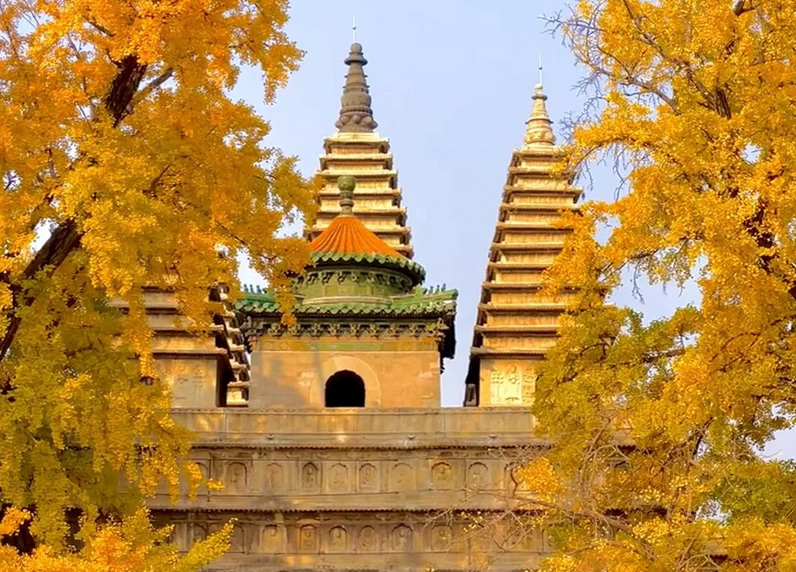
In autumn, the golden ginkgo leaves create a breathtaking contrast against the pale stone pagodas. It’s easily one of the most beautiful and lesser-known fall scenes in Beijing — perfect for photography or just a quiet moment of reflection.
Come spring and summer, the temple grounds burst into color. Roses, hydrangeas, and other seasonal flowers bloom around the site, softening the solemn lines of the stone structures and breathing life into the historic setting.
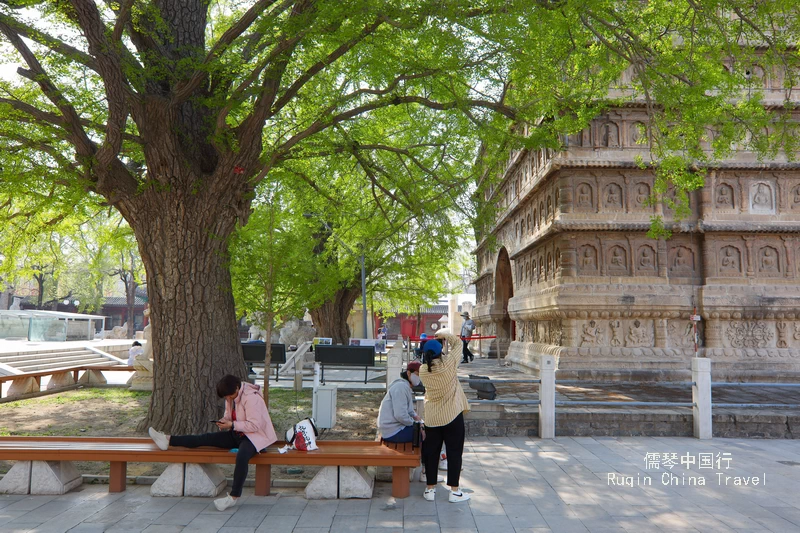
Whether you’re visiting for the architecture, the history, or just a peaceful break from the city, the garden environment of Five Pagoda Temple adds a layer of natural beauty that makes the experience even more memorable.
5. Visiting Tips & Practical Info: Make the Most of Your Trip to Five Pagoda Temple
Planning a visit to Beijing Five Pagoda Temple (Wuta Temple)? Here’s everything you need to know to enjoy a smooth and enriching experience.
🕒 Opening Hours
- Tuesday to Sunday: 9:00 AM – 5:00 PM (last entry at 4:30 PM)
- Closed on Mondays (except public holidays)
- Seasonal Hours:
- May 1 – October 9: 8:30 AM – 6:00 PM
- October 10 – April 30: 9:00 AM – 5:00 PM
🎟️ Tickets
- Adults: 20 RMB per person
- How to Buy: Purchase tickets on-site or in advance via the official WeChat account of the Beijing Stone Carving Art Museum.
🚇 How to Get There
- By Subway: Take Line 4 or Line 9 to National Library Station. Exit from Exit C, then walk about 10 minutes.
- By Bus: Take routes Te19, 86, 319, or others to National Library Stop.
- By Car: Not recommended. The area is close to Beijing Zoo, so parking is limited and traffic can be heavy.
🗺️ Suggested Route
- Main Entrance: Start with the ancient 600-year-old ginkgo trees and check out the historical info panels near the former main hall site.
- Diamond Throne Pagoda: Walk clockwise around the structure to admire the detailed stone carvings from every angle.
- Stone Carving Exhibition Areas: Explore the nine sections on the east, north, and west sides. Don’t miss the Buddhist steles, Jesuit missionary tombstones, and architectural carvings.
- Rest Area: Pause at the plaza or sit on one of the surrounding benches to soak in the peaceful atmosphere and beautiful surroundings.
- Cultural Gift Shop: Before leaving, stop by the museum’s creative space to browse for unique souvenirs and temple-inspired gifts.
6. Nearby Attractions & Full Day Itinerary Ideas
One of the best things about visiting Five Pagoda Temple is its prime location in Beijing’s Haidian District, a cultural hotspot packed with museums, gardens, universities, and family-friendly attractions. With smart planning, you can turn your visit into a rich and well-rounded day trip that blends history, nature, learning, and fun.

📚 National Library & Ancient Books Museum (5-minute walk)
Just a short stroll from Wuta Temple, the National Library of China is the largest in Asia and a stunning piece of architecture in its own right. Its Ancient Books Museum houses rare manuscripts and hosts rotating exhibitions. After seeing the stone inscriptions at the temple, this is a perfect follow-up to deepen your understanding of China’s literary and scholarly heritage.
🐼 Beijing Panda House (Beijing Zoo) (10-minute walk)
Right across the river from the temple, the Beijing Zoo with Beijing Panda House is one of China’s oldest and most beloved. Beyond the pandas and exotic animals, you’ll find Qing Dynasty historical buildings, like the Changguan Pavilion and old agricultural experiment station. It’s an ideal stop for families, adding a playful twist to a culture-focused day.
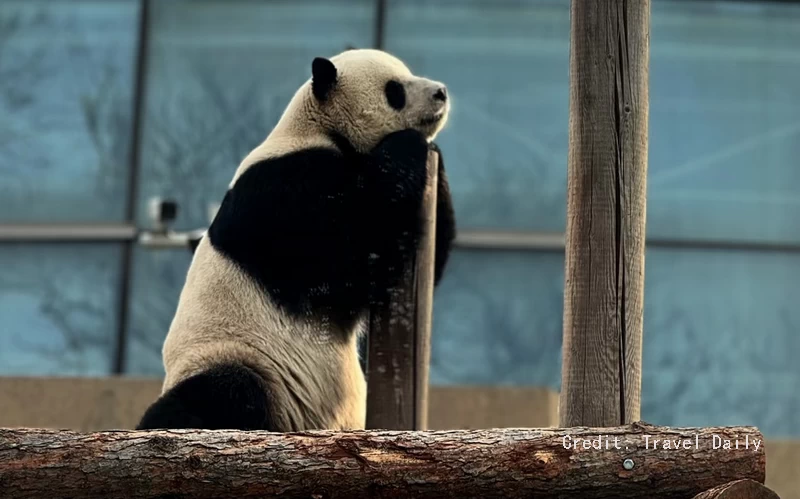
🎋 Zizhuyuan Park (Purple Bamboo Park) (15 minutes by bus)
If you’re craving green space, this classical Chinese garden is just a short ride away. With winding lakes, bamboo groves, and seasonal flowers like spring peach blossoms and summer lotus, it’s a peaceful spot to unwind. Best of all? Entry is free, and it gives a glimpse into everyday Beijing local life.
👑 Summer Palace (20 minutes by taxi)
Wrap up your day with a visit to Summer Palace, Beijing’s most famous imperial garden. In the afternoon, stroll along Kunming Lake or climb Longevity Hill for sweeping views. From mid-March to mid-April, the peach and crabapple blossoms along the lake’s western bank are especially stunning. A boat ride adds a scenic, relaxing end to your itinerary.
🎓 Peking University & Tsinghua University (about 30 minutes by car)
China’s top two universities are also nearby. Both campuses feature a blend of classical Chinese architecture and modern academic buildings, offering a quiet yet inspiring environment. Pairing your temple visit with a stroll through these intellectual landmarks adds a layer of contemporary cultural insight to your historical tour.
From ancient pagodas to modern libraries, animal encounters to lakeside gardens, the Five Pagoda Temple area is the perfect launchpad for a well-balanced, one-day exploration of Beijing. Whether you’re into history, nature, or cultural fusion, there’s something here for every kind of traveler.
Beijing is full of iconic landmarks, but Five Pagoda Temple (Wuta Temple) offers something truly special — a peaceful, lesser-known space where history, architecture, spirituality, and art come together in perfect harmony. It’s a place where you can admire 15th-century stone carvings up close, feel the quiet wisdom of ancient ginkgo trees, and explore a museum that brings the past to life in stone.
Whether you’re a history buff, a cultural explorer, or simply looking to escape the crowds for a few hours, Wuta Temple offers a refreshing, off-the-beaten-path experience right in the heart of Beijing. And with so many nearby attractions, you can easily turn your visit into a rich, full-day cultural adventure.
So next time you’re in Beijing — even if just for a layover or a quick visit — make time for this hidden gem. You won’t just see a temple; you’ll step into a story that spans centuries and connects worlds. And who knows? You might just leave with a deeper appreciation for the quieter corners of China’s capital.
More Beijing Travel Guides
Planning your Beijing tour? Our “Beijing Travel Guide“ section offers essential advice to help you navigate the city like a pro. From transportation tips and local customs to insider recommendations for hidden gems, these travel tips will ensure you have a smooth, enjoyable, and unforgettable experience in China’s vibrant capital. Let us guide you through the best practices for exploring Beijing with confidence!


